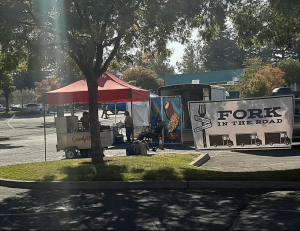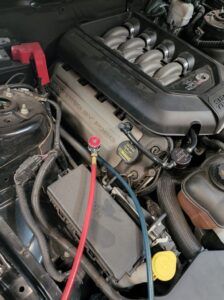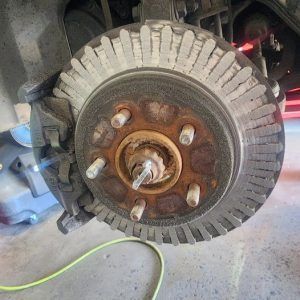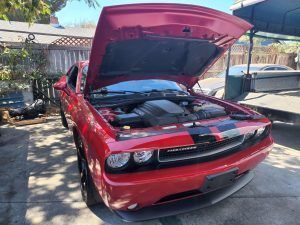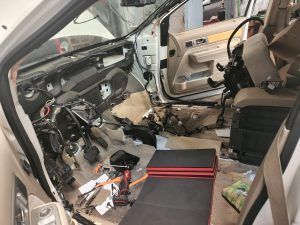Why Is My Check Engine Light On?
(Complete Guide to Check Engine Light History, Causes & Repairs in Chico, CA)
When the check engine light (CEL) turns on in your dashboard, it’s your car’s way of telling you something’s wrong. Whether it’s a loose gas cap, a misfiring cylinder, or a failing catalytic converter, the light means the engine computer — called the Powertrain Control Module (PCM) — has detected a fault that affects emissions, performance, or drivability.
At Tedious Auto Repair in Chico, CA , we specialize in check engine light diagnostics and repairs for gas, diesel, hybrid, and EV vehicles. With over 17 years of local experience, our ASE-certified mechanics can decode the cause, repair the problem, and get you safely back on the road.
Flashing vs. Solid Check Engine Light
-
Flashing Check Engine Light:
This is an urgent warning — usually caused by a severe misfire. If ignored, it can destroy your catalytic converter or even cause catastrophic engine damage. Pull over, shut off your vehicle, and call a tow truck (North Valley Towing or Brown’s Towing are trusted Chico options). -
Solid Check Engine Light:
A steady CEL means a non-emergency fault is stored. You may still be able to drive, but you should schedule diagnostics as soon as possible to avoid long-term damage and to pass your next California smog inspection .
A Deep Look at the History of the Check Engine Light
The check engine light we know today has evolved over decades of automotive innovation and emissions laws:
-
1968 – The Beginning:
Volkswagen introduced the first onboard computer in the Type 3, but it had no diagnostic features. -
1975 – First CEL-Equipped Cars:
The Datsun 280Z and Cadillac Seville debuted systems that could trigger a dashboard light when faults were detected. Bosch and Bendix helped design the software, focusing on basic emissions control. -
1980 – OBD0 (On-Board Diagnostics, Gen 0):
GM released the first version of the modern CEL in the 1980 Cadillac Eldorado , nicknamed the “idiot light.” Paired with electronic carburetors, these early systems could alter the air-fuel mixture ratio. -
1988 – OBD1:
GM advanced the system with OBD1, focusing specifically on emission controls. Codes were read through blinking light sequences — one blink pattern might indicate a misfire, another an oxygen sensor issue. -
1992–1996 – OBD2:
Developed by CARB (California Air Resources Board) , OBD2 became mandatory on all cars sold in the U.S. from 1996 onward. Volkswagen and GM adopted it early. OBD2 standardized diagnostic trouble codes (DTCs) across all makes and models. -
Today:
OBD2 systems are far more advanced. Professional scan tools from Bosch, Snap-On, and Autel can view live sensor data, freeze-frame events, and manufacturer-specific codes. Even budget Bluetooth scanners let DIYers read basic codes from their phones.
How Mechanics Pull Check Engine Light Codes
-
OBD0/OBD1 (1980s–early 1990s):
Mechanics (and DIYers) used jumper wires or paper clips to connect diagnostic pins. The CEL would flash in sequences that corresponded to fault codes. For example, Honda CRX and Toyota vehicles could be read this way. -
OBD2 (1996–present):
Every car built since 1996 uses a standardized OBD2 port (usually under the dash). A scan tool retrieves stored P-codes (e.g., P0300 = random misfire). More advanced tools read real-time sensor data , helping pinpoint whether a problem is electrical, mechanical, or fuel-related.
Common Causes of a Check Engine Light
-
Loose or faulty gas cap
-
Failed oxygen sensors
-
Worn spark plugs or ignition coils
-
Catalytic converter inefficiency
-
Failing EGR valve or DPFE sensor
-
Vacuum or exhaust leaks
-
Faulty MAF/MAP sensors
-
Transmission or EV system faults
Why You Shouldn’t Ignore the Check Engine Light
-
A flashing CEL can destroy catalytic converters ($1,500+ repair).
-
Your vehicle will fail a California smog check if the light is on.
-
Ignoring the CEL can cause poor fuel economy and higher emissions.
-
Small issues (like spark plugs) can turn into major engine damage if neglected.
Check Engine Light Repair Near Me in Chico, CA
At Tedious Auto Repair , we provide:
-
Free code reading (by appointment).
-
Full diagnostics with pro-grade scanners.
-
Repairs for gas, diesel, hybrid, and EV vehicles.
-
OEM-quality parts and trusted suppliers.
-
Smog compliance support to keep you California-legal.
Why Chico Drivers Trust Tedious Auto Repair
Whether you’re a Chico State student, a Paradise commuter, or a Hamilton City local, here’s why Tedious Auto Repair is your best choice:
-
17+ years of experience in check engine light and emissions repair.
-
Trusted by students and families alike for fair pricing and clear communication.
-
Specialists in smog-related repairs — so you can pass your test the first time.
-
ASE-certified mechanics who understand the evolution of OBD technology.
-
Friendly, local service backed by 5-star reviews from Chico drivers.
✅ Don’t cover up your check engine light with a picture or hope it goes away. Bring it to Tedious Auto Repair in Chico, CA , where we’ll diagnose and fix the problem right the first time.
📍 Located at 2695 CA-32, Chico, CA 95973 — just minutes from Chico State and downtown.
